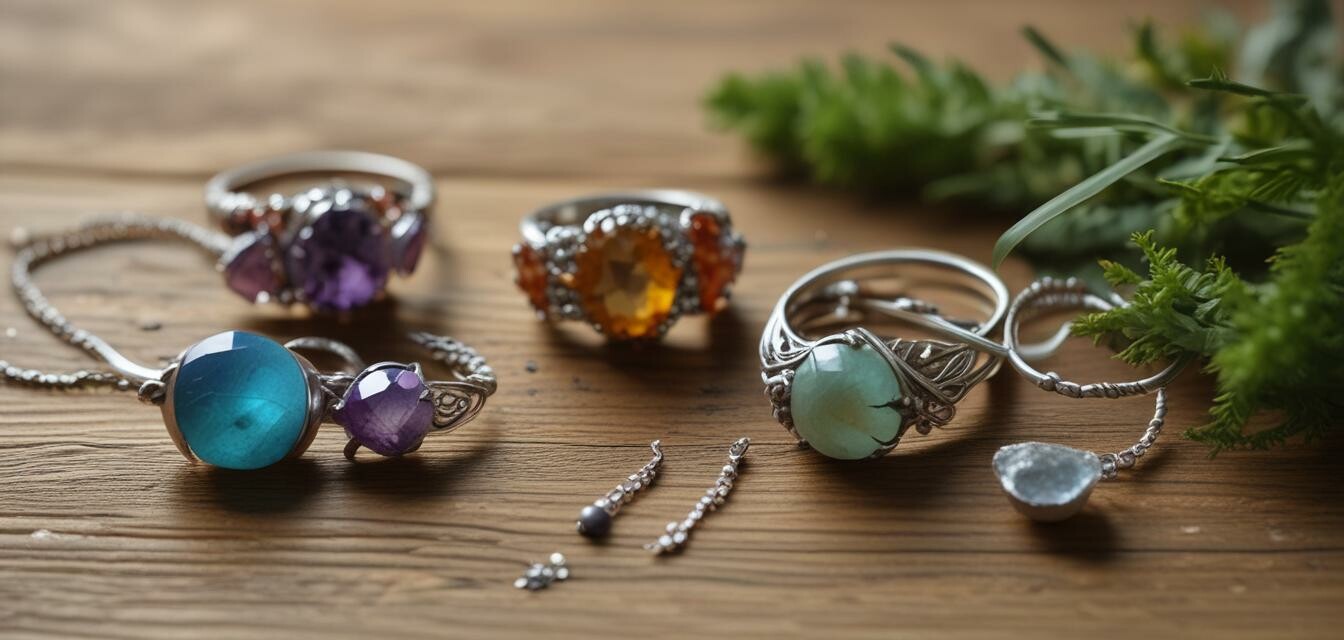
The intersection of fashion and sustainability
- The fashion industry is increasingly embracing sustainable practices.
- Jewelry brands are focusing on ethical sourcing and eco-friendly materials.
- Trends in gemstone colors and designs reflect a commitment to sustainability.
- Consumer awareness is pushing brands towards more transparency.
- Artisans play a crucial role in sustainable jewelry movements.
The fashion industry has started to shift gears, moving towards sustainability and ethical practices. This transformation is not only impacting clothing but also the jewelry realm, particularly with a focus on ethical gemstone jewelry. As consumers become more conscious of the impact their purchases have on the planet, brands are stepping up to meet these demands. In this article, we explore the intersection of fashion and sustainability, particularly how it shapes the jewelry industry.
The growing importance of sustainability in fashion
Once seen as a niche focus, sustainability has now become a key driver in the fashion industry. Whether it's big brands or local artisans, everyone is striving to adopt eco-friendly practices. Here are some reasons for this shift:
- Consumer demand: More shoppers are looking for sustainable options.
- Transparency: Brands are expected to be open about their sourcing and production methods.
- Environmental impact: The industry’s notorious pollution levels push for sustainable solutions.
Jewelry and ethical sourcing
The jewelry sector is experiencing a notable shift towards ethical sourcing. Artisans are embracing fair trade practices, ensuring that their materials are acquired sustainably. This means that the gemstones used in the jewelry are sourced responsibly, safeguarding both the environment and local communities. A quick overview of ethical sourcing is illustrated in the table below:
| Type of sourcing | Description | Benefits |
|---|---|---|
| Fair Trade | Ensures fair wages for workers. | Helps communities thrive economically. |
| Sustainable Mining | Focuses on environmentally friendly extraction methods. | Minimizes ecological damage. |
| Recycled Materials | Uses previously made jewelry and stones. | Reduces waste and resource depletion. |
Notable trends in the jewelry sector
As sustainability gains more traction, various trends arise within the jewelry sector that reflect this conscious shift:
- Natural stones: Unique, unpolished gemstones are on the rise.
- Minimalist designs: Simple, elegant pieces focusing on craftsmanship.
- Colorful gemstones: Popular colors include greens, blues, and earth tones, representing environmental themes.
Artisans leading the charge
At the heart of the sustainable jewelry revolution are artisans who use their skills to create stunning pieces while adhering to ethical practices. They often source their materials locally to reduce carbon footprints and support their communities. Notable practices among artisans include:
- Engaging in local craftsmanship.
- Promoting eco-friendly practices in their workshops.
- Collaborating with non-profits to support environmental initiatives.
Consumer awareness and brand responsibility
With growing awareness, consumers are demanding more transparency from brands about their practices. This demand is causing brands to rethink their sourcing, production, and marketing strategies. In response to the change, many companies are now highlighting their efforts in sustainability and ethical sourcing. Here’s how brands are making strides:
| Brand Approach | Actions Taken | Impacts |
|---|---|---|
| Transparency | Providing detailed reports on sourcing and labor practices. | Building consumer trust and loyalty. |
| Innovation | Investing in sustainable technologies. | Improving the ecological footprint. |
| Community Engagement | Supporting local artisans and economies. | Fostering a sense of responsibility within brands. |
Pros of sustainability in jewelry
- Supports ethical labor practices.
- Promotes environmental conservation.
- Encourages creativity and uniqueness in designs.
Cons of sustainability in jewelry
- Sometimes higher price points due to quality sourcing.
- Limited availability compared to mainstream options.
Conclusion: The future of sustainable fashion
The intersection of fashion and sustainability calls for a concerted effort from consumers, brands, and artisans alike. As the jewelry industry continues to evolve, embracing ethical practices, the possibilities for innovation are endless. By choosing sustainable jewelry, such as ethical stone earrings, customers not only make a fashion statement but also contribute to a brighter future.
To explore more about ethical jewelry options, check out our ethical stone earrings collection. Stay informed and join us in making conscious choices for a sustainable future!